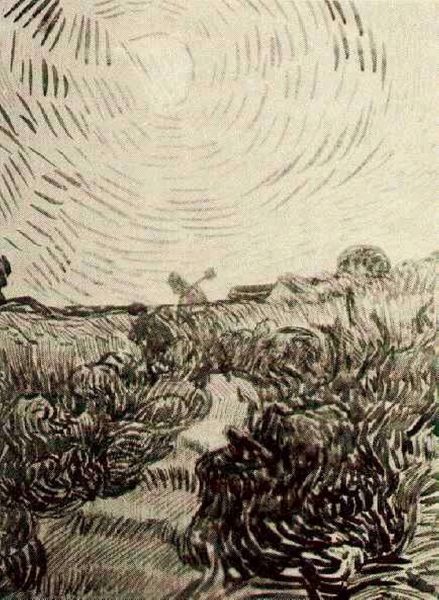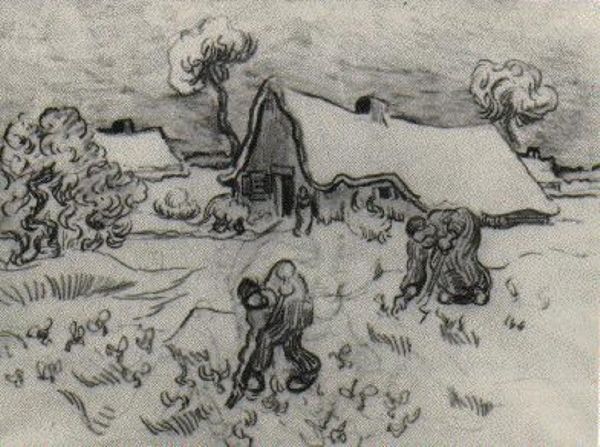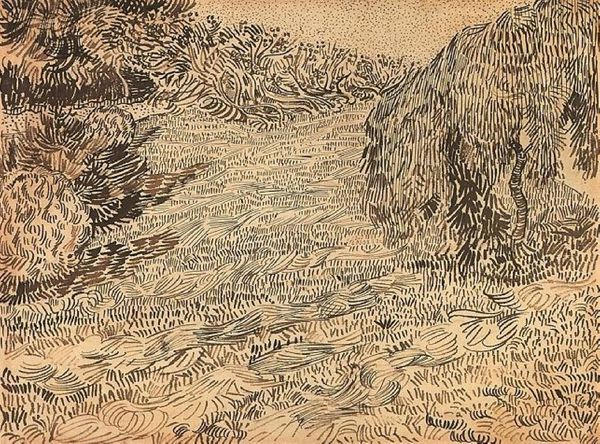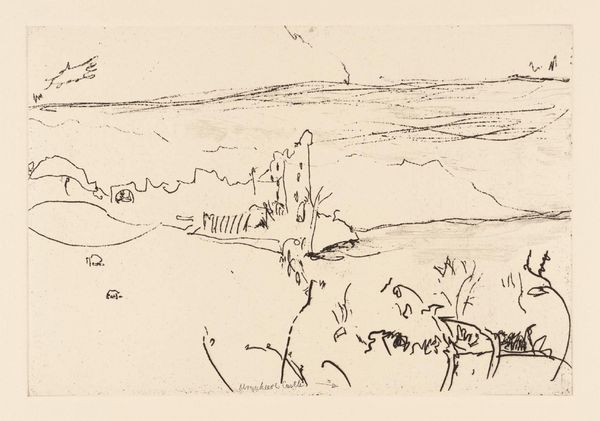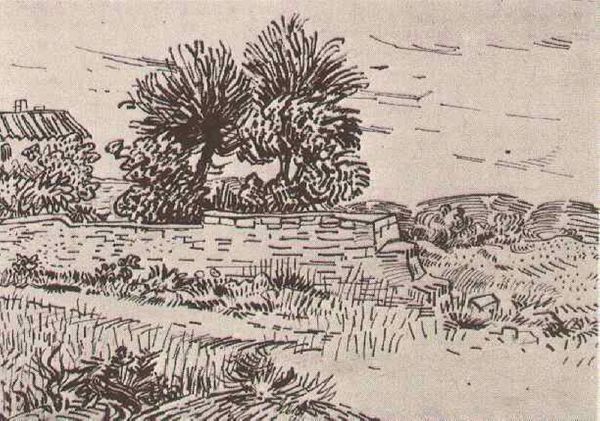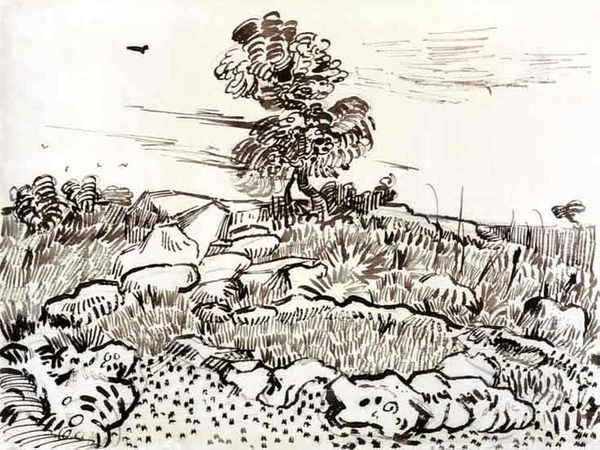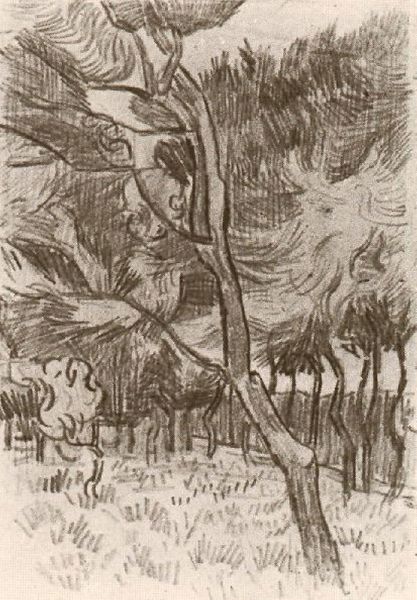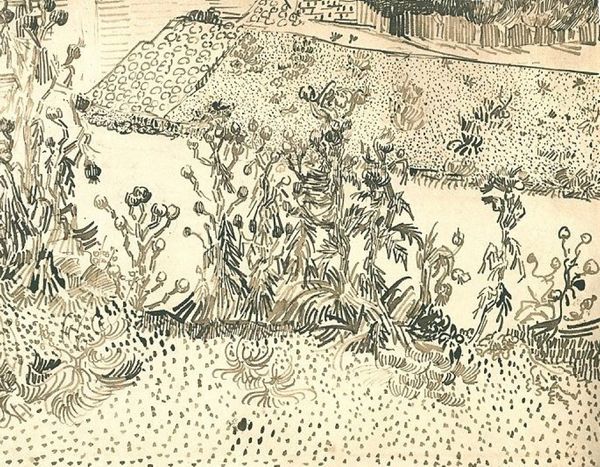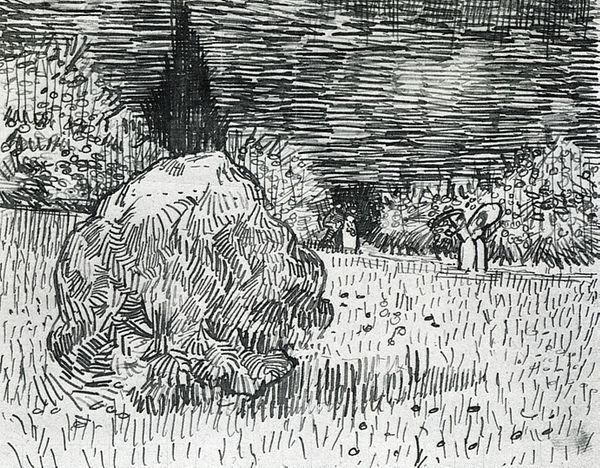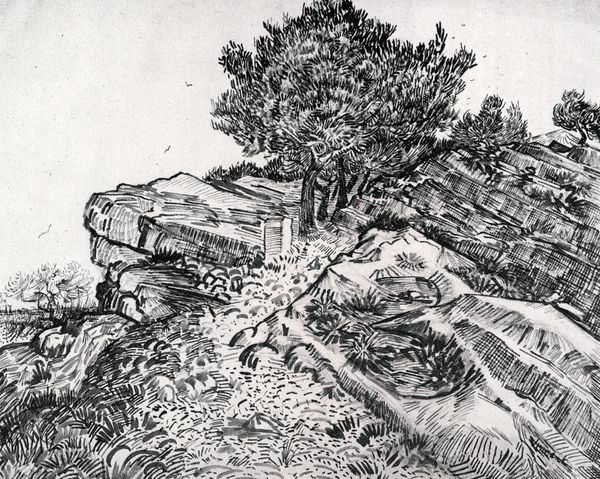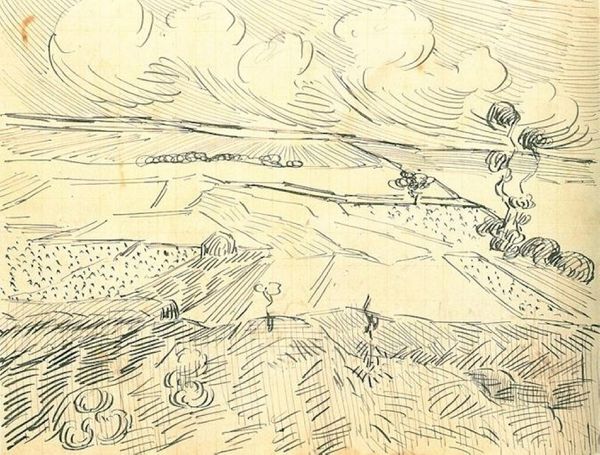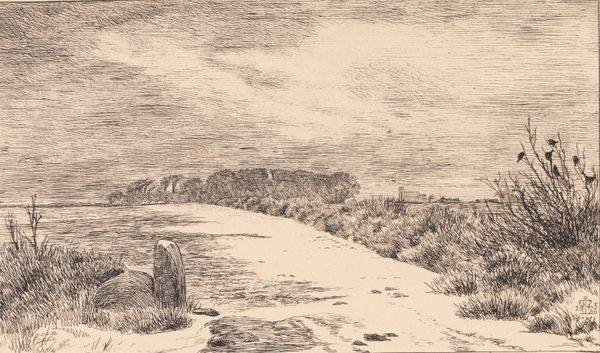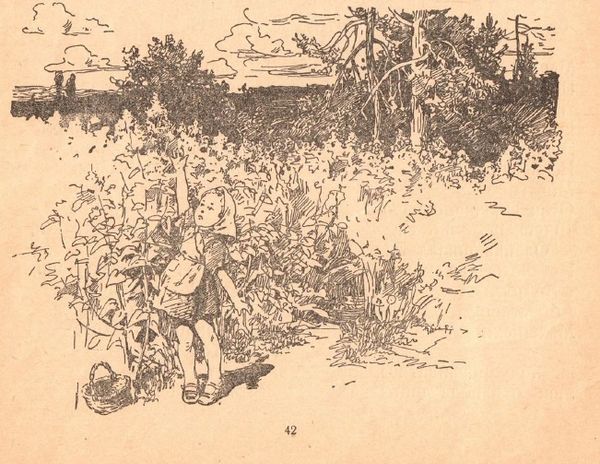
drawing, pencil, graphite, frottage
#
tree
#
drawing
#
impressionism
#
grass
#
landscape
#
plant
#
sketch
#
pencil
#
graphite
#
post-impressionism
#
frottage
Copyright: Public domain
Editor: This is Van Gogh’s “Field with Bare Tree,” created in 1889 using pencil and graphite. The sketch evokes a quiet sense of isolation. How would you approach interpreting its stark imagery? Curator: Formally, observe the stark contrast between the dense, textured foreground of grass and the relatively sparse rendering of the field and bare tree. The use of frottage, evident in the subtle variations of tone, creates a tactile surface that engages the viewer. Consider the lines themselves—short, repetitive strokes building the foreground, longer, more deliberate lines defining the tree. How does the artist create depth with such limited means? Editor: I see how the varying pressure of the pencil creates a sense of texture, almost making the grass seem to move. What's the significance of the bare tree as the focal point? Curator: The tree, devoid of foliage, functions as a structural anchor, directing the eye and fragmenting the pictorial space. Note the branching structure. Does the artist's manipulation of line quality and the distribution of value affect your reading of the tree as an isolated form? The composition guides our eye, shaping our experience. Editor: That's fascinating; focusing on how the elements are put together helps understand what's being communicated. I had originally thought the bareness meant the drawing felt depressing, but I hadn’t examined how depth and movement are captured within the stark composition. Curator: Indeed. The expressive power lies not in a direct representation of a scene but rather in how the artist’s choices guide our visual perception and emotional response. Consider, therefore, the pure relationship of form and line.
Comments
No comments
Be the first to comment and join the conversation on the ultimate creative platform.

